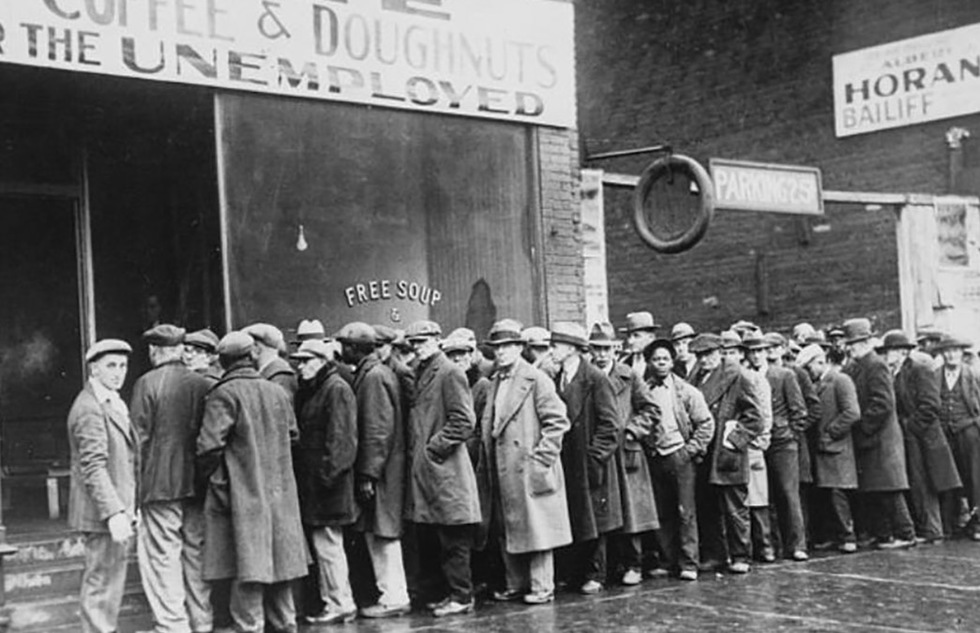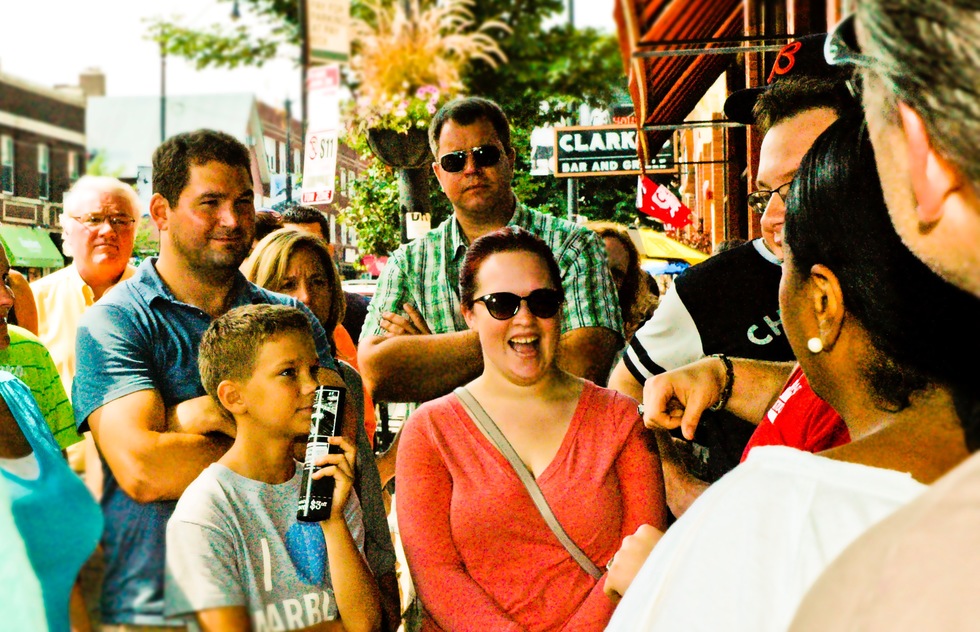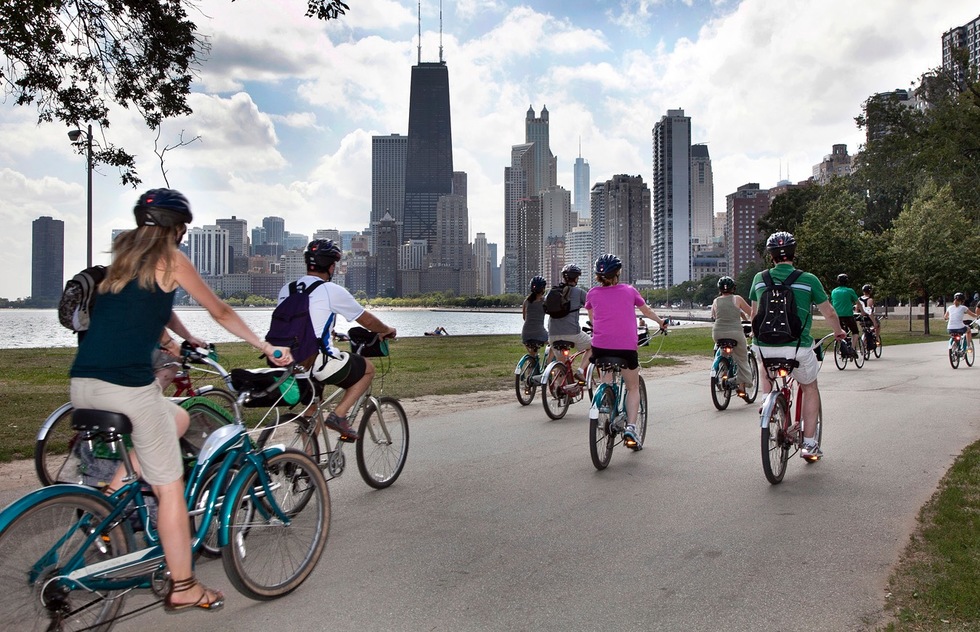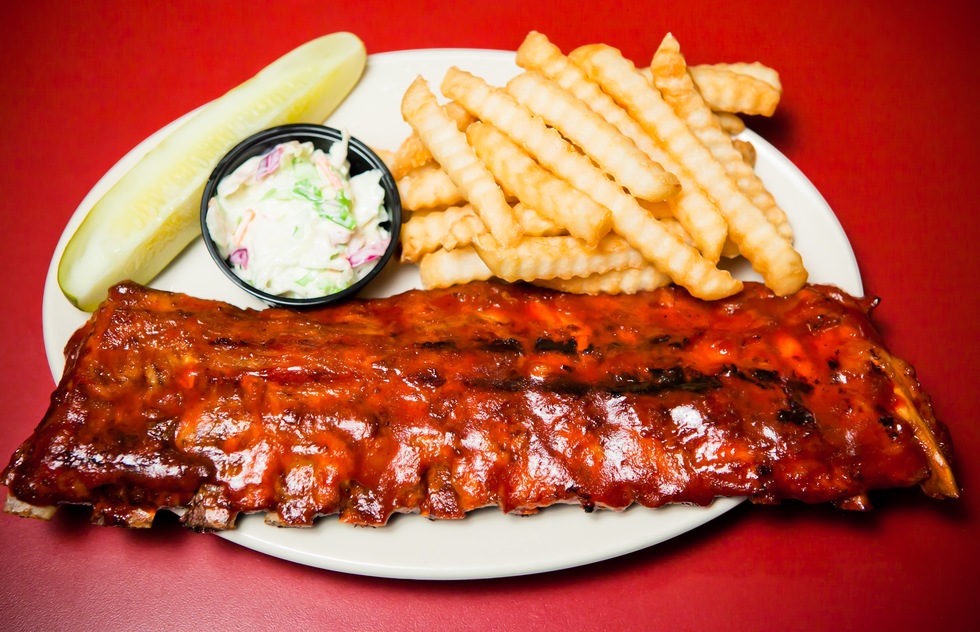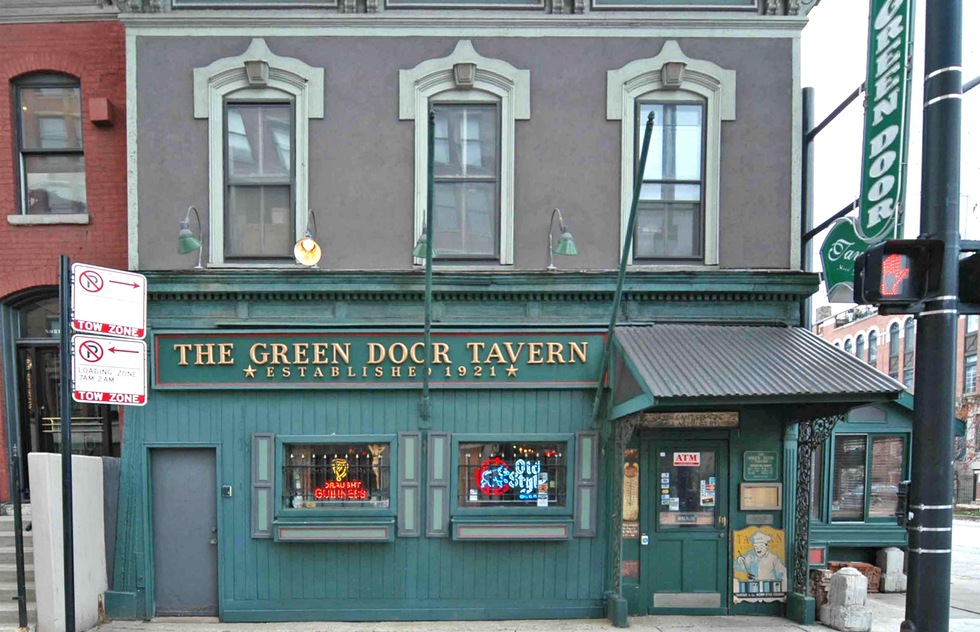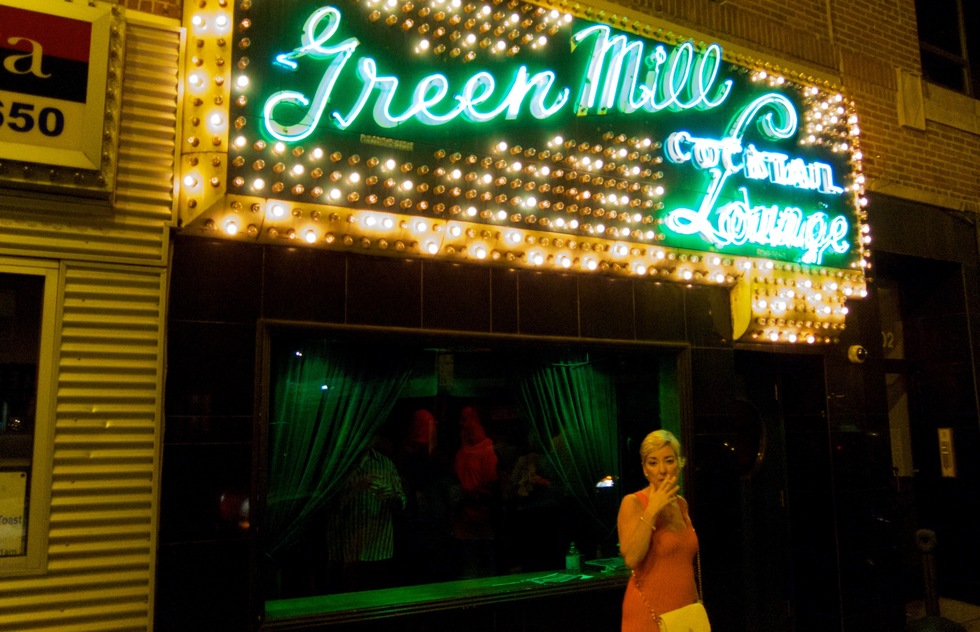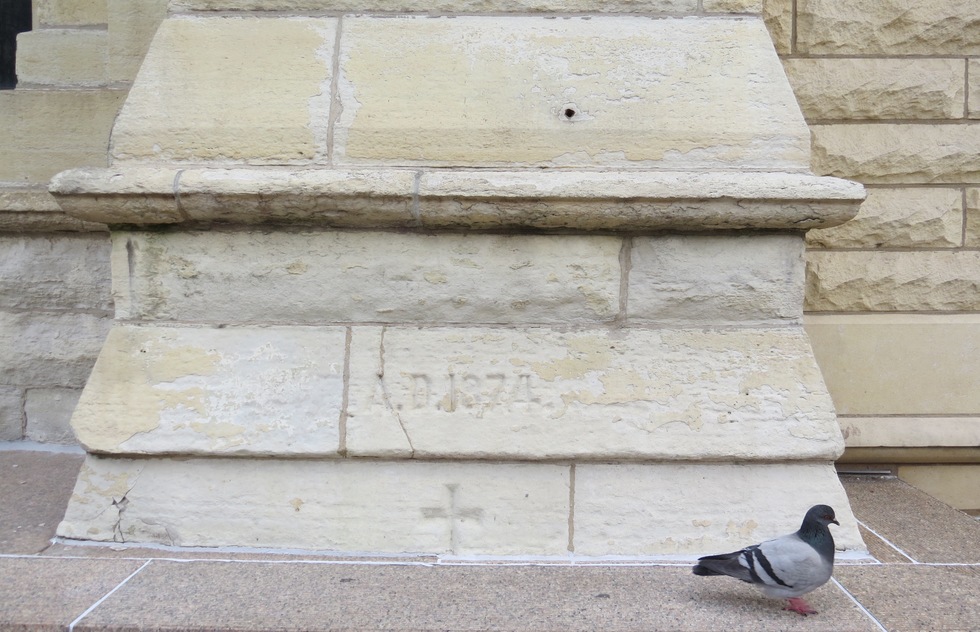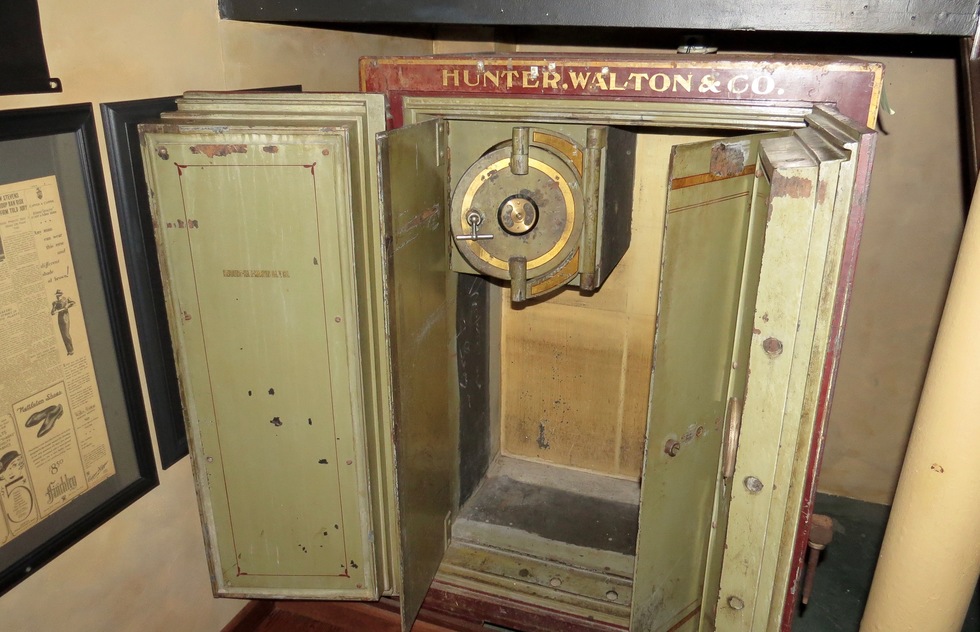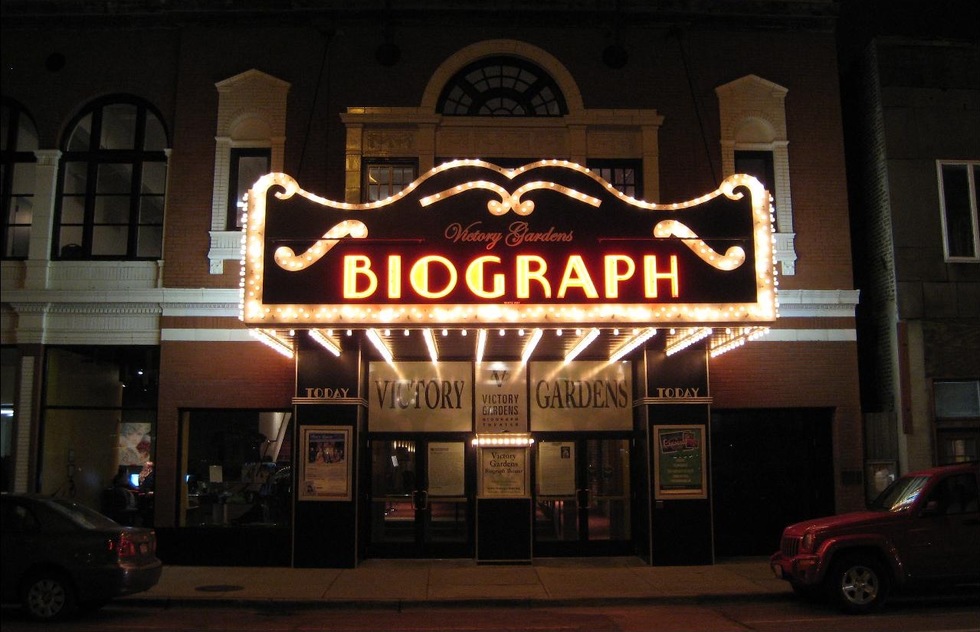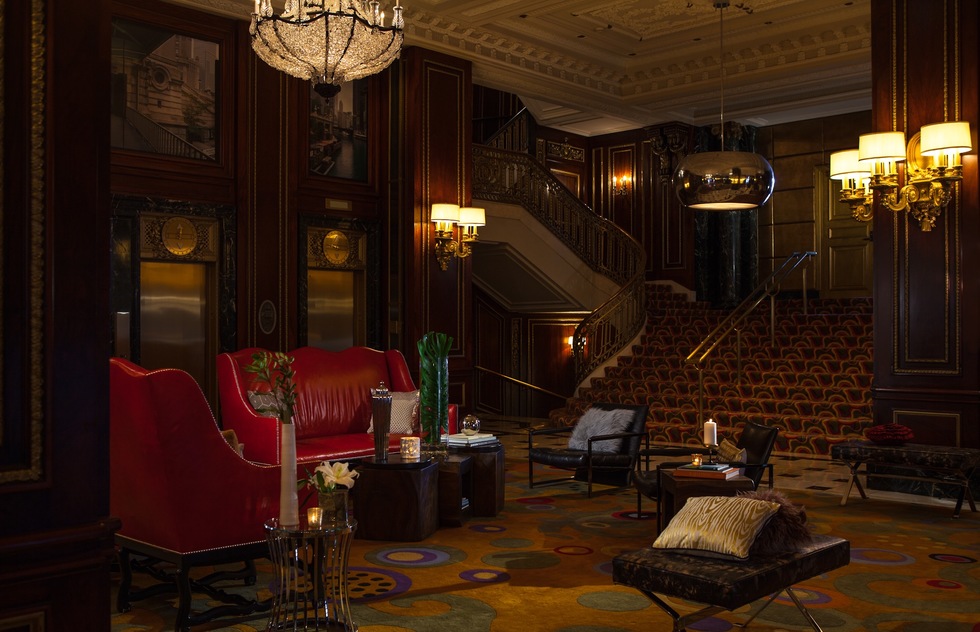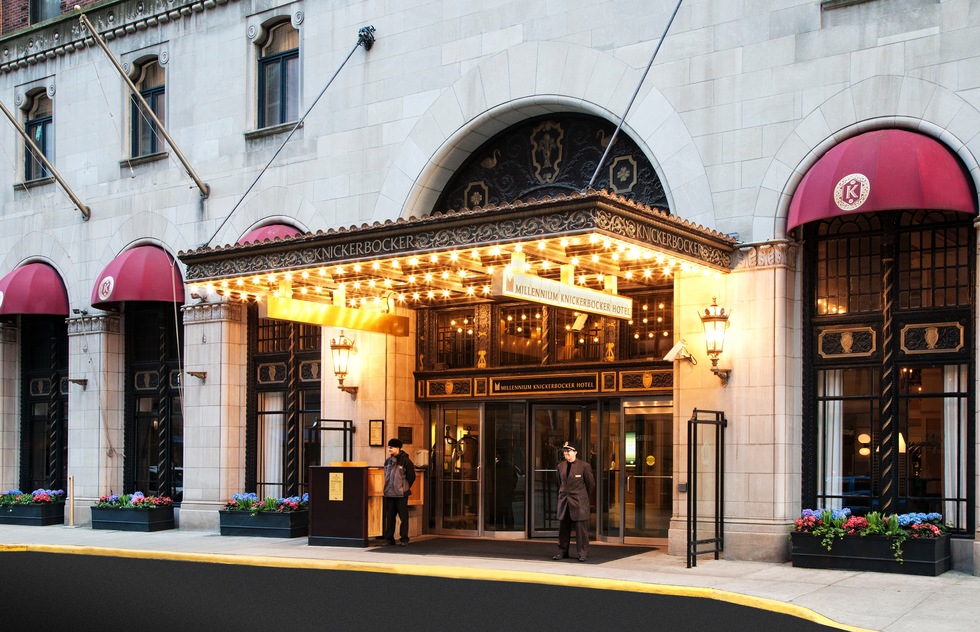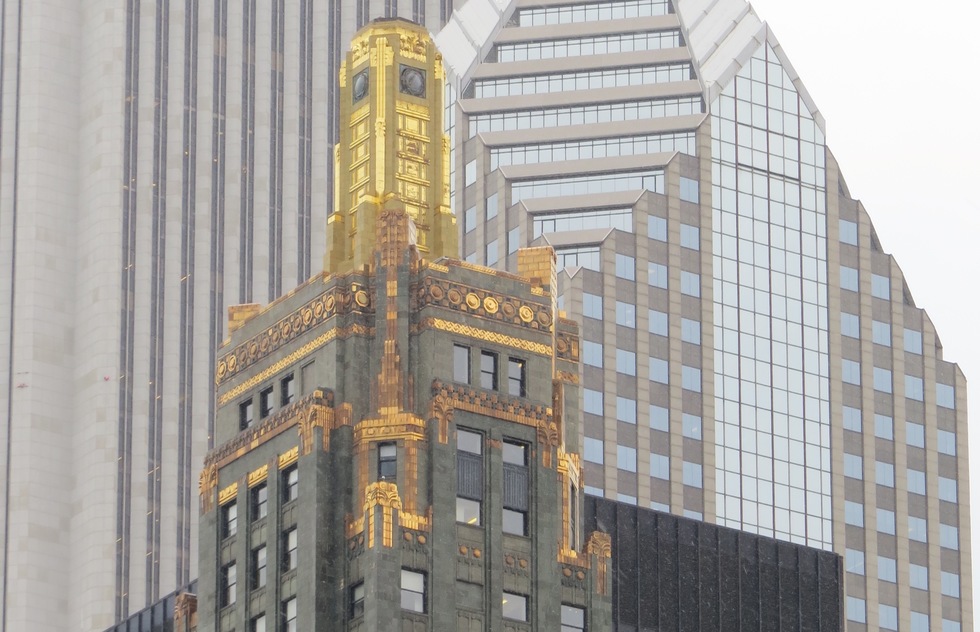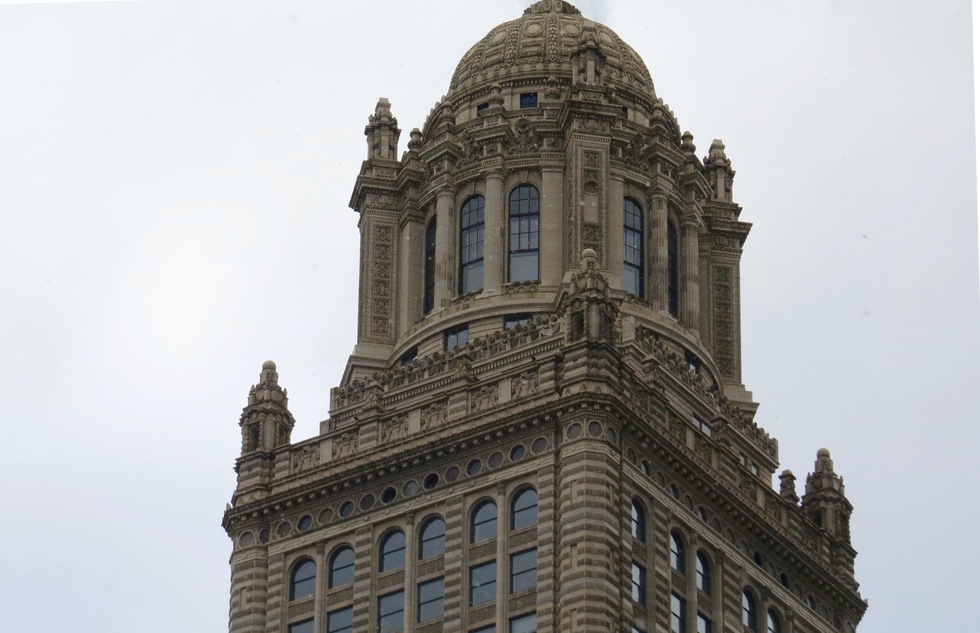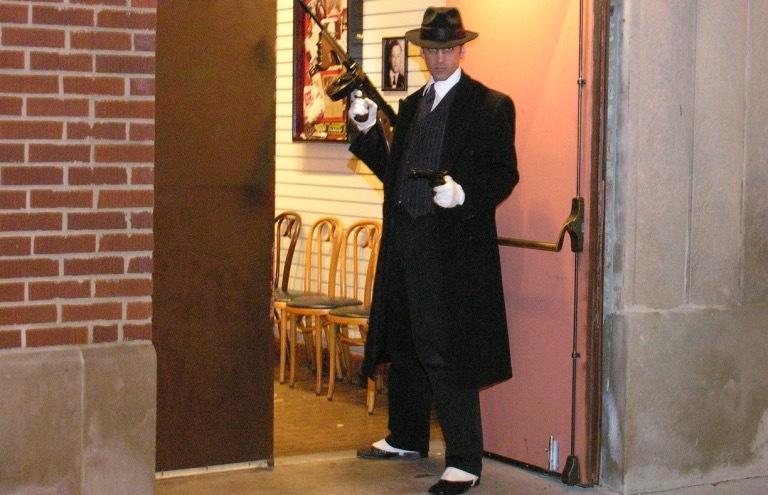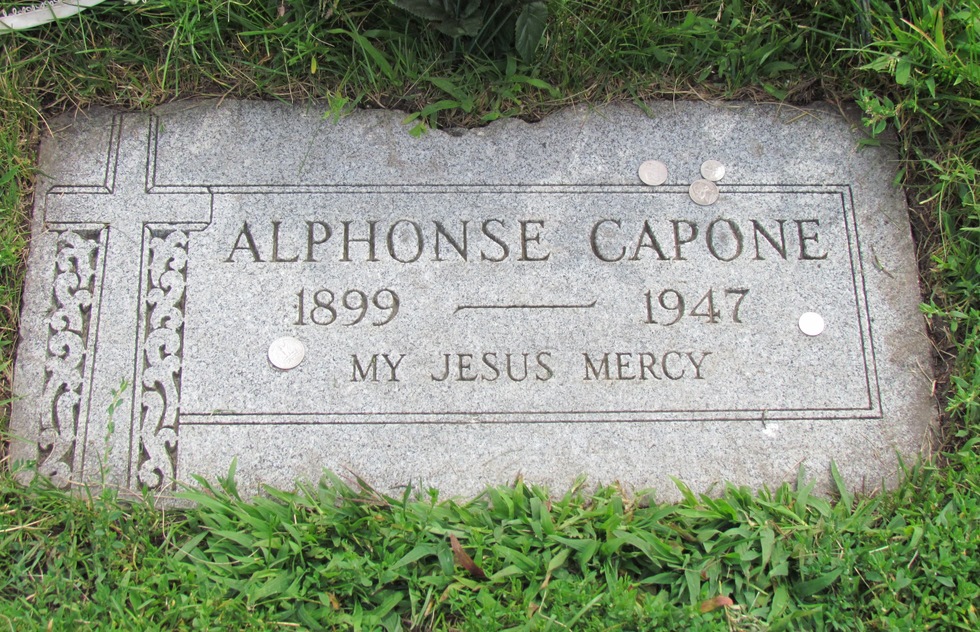Vacations with Capone: Sightseeing Chicago's Gangster Years
By Erica Bray
Al Capone, for better or for worse, remains an unofficial ambassador for Chicago, even some 100 years after he ruled the city’s Prohibition era gangster scene. Something about the crime, vice, and bootlegging he made famous in the 1920s and ‘30s holds allure for out-of-town guests as well as locals, who still recall it as a “tough guy” point of pride. While many of the old haunts and murderous settings of the Prohibition-era gangsters have been bulldozed or lost with time—like the soup kitchen Capone set up at 935 S. State St. (pictured in 1931) to get the public on his side—there’s still ample opportunity to explore the bullet-riddled legacy of Chicago. Here are some favorites.
Untouchable Tours
Start by setting the scene. This long-running two-hour bus tour mixes gangster history with entertainment. Guides with nicknames like “Shoulders” or “Johnny Rocco” are dressed in fedoras and dapper suits, sporting thick Chicago accents, and they whisk guests around town on a retrofitted black school bus. “Two important inventions came out of Chicago during this time,” said Johnny Rocco during my tour, “the machine gun and the drive-by.” Untouchable Tours hits notorious spots across the city’s North and South sides, including the site of the Saint Valentine’s Day Massacre, a still-unsolved crime from 1929 where seven men from the North Side Irish gang were gunned down. (Capone was suspected, but no evidence ever directly tied his syndicate to the slaughter.) The tour balances crime storytelling with personal anecdotes, some of which have been collected over the years by guests with family ties to Prohibition-era bootlegging and its infamous leaders. “I’ve never heard a bad thing about Al Capone as a ‘regular’ guy,” says owner Craig Alton. “Of course, that is not his murderous truth.”
Chicago Crime Tours
This 90-minute tour infuses gangster storylines into a robust retelling of the notorious crimes and serial killers associated with Chicago, from 19th-century to modern-day. My tour guide Ben began like this: “Full disclosure: Everybody dies in all of my stories.” On luxury limo bus, monitors play old-time newsreels as you go from downtown to Northside neighborhoods and back, with several stops along the route to get off and have a look around. Chicago Crime Tours is considered well-researched, even when judged by Second City locals such as myself.
Bobby’s Bike Hike
Pedal your way through the old stomping grounds of Chicago’s bootlegging gangsters. The 3.5-hour “Southside Gangster Bike Tour” offered by Bobby’s Bike Hike provides an intimate vantage point in which to hear the tales. The route rolls past old mobster homes and hangouts, slicing through areas such as Bridgeport (the longtime heart of Chicago’s Italian community), Chicago’s former Red Light District, and the Lakefront. Skyline views and seedy tales are guaranteed—as is an Italian beef sandwich at local favorite Ricobene’s.
History on Tap Tours
Liz Garibay, formerly with the excellent Chicago History Museum, takes guests on tours of the legendary taverns and former speakeasies such as Twin Anchors (pictured, a favorite of Frank Sinatra), with an emphasis on Prohibition-era tales that played out in these establishments. Garibay runs History on Tap, which says it “looks at history through the lens of alcohol”—something intrinsic to the gangster culture. There were an estimated 20,000 speakeasies across Chicago during that time; today, there are just over 6,000 places in the city with a liquor license. Stop and think about that for a minute: There were more places to drink in Chicago when it was illegal to sell alcohol.
Twin Anchors
You could also hit up Twin Anchors (1655 N. Sedgwick St.) on your own. This Lincoln Park tavern is known for its lip-smackingly delicious barbecued ribs and its colorful past. During the Prohibition, this spot was a speakeasy known as “Tante Lee Soft Drinks,” providing refreshments for the “thirsty” in a back room. A secret tunnel to the apartment building next door, which would have been used in the case of raids, still exists. Twin Anchors gets its name from the original operators of the joint: two guys (“twin anchors”) who’d smuggle booze from Canada by taking a boat into Lake Michigan for the illegal exchange.
The Green Door Tavern
During Prohibition, a green door signaled the presence of a speakeasy. This quintessential Chicago bar was once an Italian restaurant with a basement speakeasy run by an Irish mobster and bootlegger, Dean O’Banion, a bitter rival of Al Capone. (Capone reportedly ordered the hit that ultimately killed him.) The speakeasy is tucked away in the basement and is now a bar-within-a-bar called The Drifter, an intimate spot with nightly entertainment such as jazz pianists and burlesque dancers. It’s a fun throw-back atmosphere that serves “cocktails paired with bartenders who know how to keep a secret.”
Green Mill Cocktail Lounge
Shades of the Prohibition era linger at the legendary Green Mill jazz club in the Uptown neighborhood. Gangster memorabilia lines the walls, and you’ll still find the booth where Al Capone and his henchmen could keep an eye on both doors. Behind the bar is a trap door = to the basement where tunnels lead to alternate escapes to other buildings. Capone was a big fan of jazz and frequented this club, which was allegedly part-owned by his associate “Machine Gun” Jack McGurn. He was known to tip the staff $100 each—the smallest bill he carried.
Holy Name Cathedral
Earl “Hymie” Weiss, a former altar boy who rose to leader of the Northside gang, was machine gunned by Al Capone’s Southside men in front of this historic church in Chicago’s Gold Coast. A stone is still scarred by stray bullets. Couples who get married at Holy Name Cathedral will sometimes pose in front of the hole. Only in Chicago does the legacy of one of the city’s most notorious gangster homicides make it into wedding albums.
Chicago Pizza and Oven Grinder
Oh, if buildings could talk. Chicago Pizza and Oven Grinder sits across the street from one of the most infamous mob executions in Chicago history: The Saint Valentine’s Day Massacre of 1929. The notorious crime—a bloody, machine gun-killing of seven mobsters from the Northside gang—remains unsolved to this day. Many have suspected Al Capone to have ordered the hit given disputes with the victims’ boss, George “Bugs” Moran. Although the actual murder scene is now a parking lot, people make a pilgrimage here for a pizza—in the very building hit men likely used as a lookout.
Harry Caray’s Italian Steakhouse
Sports memorabilia abounds in this River North restaurant that pays homage to the Chicago Cubs and its legendary broadcaster Harry Caray. Those who venture into the basement of Harry Caray’s, however, will find a jackpot of gangster goods. The walls are lined with photographs and newspaper clippings from the era—headlines such as “Capone’s Life: From Barkeep to Gang Chief” and “Dillinger Breaks Jail!” The coolest souvenir: a massive, three-door safe (pictured) owned by Frank Nitti, a Capone associate who once lived on the fourth floor of this very building until committing suicide in 1943. Browse the museum-quality collection below before feasting on a Sicilian-style veal chop in the restaurant above.
Biograph Theater
The Biograph Theater is where John Dillinger, serial bank robber and “Public Enemy No. 1,” met his fate in 1934. He was shot and killed by federal agents after leaving a movie with Anna Sage, an informant who was working with authorities. Sage, dubbed the “Woman in Red,” provided the signal that the gunmen needed, because Dillinger had undergone plastic surgery was unrecognizable from earlier mugshots and photos. Dillinger tried to escape by running into a nearby alley, where he died. The alley is still there, a popular stop on gangster tours for the retelling of that fateful night. The theatre, which is on the National Register of Historic Places, is now home to the Victory Gardens Theater, but the signature Biograph marque remains.
Renaissance Blackstone Chicago Hotel
Not all gangster meetings were held in smoky backrooms and speakeasies. Charles “Lucky” Luciano hosted the first-ever Crime Convention in the Crystal Ballroom of the Blackstone in 1931. The intent was to establish a board of directors for his “National Crime Syndicate.” The hotel isn't only famous for mobsters—it was in Suite 915 where, in 1920, Republican party bosses hunkered down to select their presidential candidate, the ill-fated Warren G. Harding, and news coverage of the macho pow-wow gave birth to the phrase "smoke-filled room."
Millennium Knickerbocker Hotel
Built in 1927, this lavish Knickerbocker has a colorful history that includes Playboy bunnies (it was once the Playboy Towers Hotel) and Al Capone’s brother. He reportedly ran a penthouse casino on the top floors. The discovery in 1980 of a secret door leading to a stairway added credibility to this longtime rumor. After all, access—and exits—were tightly controlled in a joint popular with Chicago’s underworld. While the Bunnies and the casino are now long gone, you can hit the hotel’s Martini Bar, which features a 1920s cocktail menu and nearly two dozen martini varieties.
Carbine & Carbon Building
Built in 1929, this Art Deco skyscraper is said to be a big middle finger to those who supported Prohibition at the time. Just look up: Architects Daniel and Hubert Burnham are said to have designed the top to resemble a dark green champagne bottle corked with gold foil. The building is now home to the Hard Rock Hotel Chicago.
Jewelers’ Building
Most of Chicago’s estimated 20,000 speakeasies were tucked away into basements and backrooms. But not one of Al Capone’s rumored favorites. It sat at the top of the Jewelers Building, in the dome overlooking the Chicago River. What later became the Stratosphere Lounge is said to have attracted the cream of Chicago’s notorious underworld.
Tommy Gun's Garage
By night, maybe you want something campy and silly to balance the gory tales of gangster-era Chicago. Expect plenty of feather boas, flappers, and fedoras at Tommy Gun’s Garage, an interactive speakeasy show in what used to be Chicago’s Red Light District. The fun begins before you set foot inside: You’ll need to provide a password to get through the doors. The sit-down dinner is accompanied by Roaring Twenties music and entertainment, with staff doubling as the singers and dancers.
Mt. Carmel Catholic Cemetery
The final resting place of Alphonse "Al" Capone, Mt. Carmel Catholic Cemetery, is 20 miles west of Chicago in the suburb of Hillside. You’d think that given his gangster lifestyle he would have died in some epic gun battle, but he went out with a whimper. He died of syphilis, living his final days in a dementia haze after being released from Alcatraz, where he served time for tax evasion. People who visit often place quarters on the grave since Capone was famous for tossing a quarter in his hand. It’s also worth noting that two mobster adversaries Capone allegedly killed, Dean (Dion) O’Banion and Earl “Hymie” Weiss, are also buried in the same cemetery. They're resting in peace, but their rollicking legacy lives on.





